November 18, 2021
2-minute read
This year’s Thinkers50 list is in. And for the fourth consecutive time, Erik Brynjolfsson appears on the biennial ranking that recognizes researchers and visionaries around the world who are leading the way in business and management thinking.
Brynjolfsson, who directs the Stanford Digital Economy Lab (S-DEL), is one of the most-cited authors on the economics of information. His research examines the effects of information technologies on business strategy, productivity and performance, digital commerce, and intangible assets. His other affiliations include the Jerry Yang and Akiko Yamazaki Professor and senior fellow at the Stanford Institute for Human-Centered AI (HAI), the Ralph Landau Senior Fellow at the Stanford Institute for Economic Policy Research (SIEPR), and professor by courtesy at the Stanford Graduate School of Business and Stanford Department of Economics.
Brynjolfsson was recognized alongside Andrew McAfee, a principal research scientist at the MIT Initiative on the Digital Economy (IDE). Over the past decade, Brynjolfsson and McAfee have co-authored three books together, including The Second Machine Age and Race Against the Machine. Thinkers50 recognized the duo for shaping the conversation and vision for a digital future: “Their work continues to provide a roadmap for success in a digital economy.”
Two S-DEL digital fellows, Marshall Van Alstyne and Geoffrey Parker, also made the Thinkers50 list for their research on the digital economy. Van Alstyne, a professor of information systems at Questrom School of Business, and Parker, a professor at Dartmouth Engineering, are experts in the realms of platforms and network business models. Their 2016 book (with co-author Sangeet Paul Choudary), Platform Revolution, shows how businesses can thrive in an evolving era of platform technology.
Marshall Van Alstyne
Geoffrey Parker
Another S-DEL digital fellow, Matt Beane, made the shortlist for the Thinkers50 Digital Thinking Award, an honor that celebrates leaders who are transforming the digital revolution into management insights. Beane is an assistant professor of technology management at the University of California, Santa Barbara. His TedTalk titled “How do we work with intelligent machines?” has garnered more than 1.9 million views.
Visit thinkers50.com for a full list of this year’s honorees.
2021 HAI Fall Conference
Policy & AI: Four Radical Proposals for a Better Society
November 9-10, 2021
Virtual event
Last spring, scholars at Stanford Institute for Human-Centered AI put forth a call: What are the most radical policy proposals focused on emerging technologies that could respond to the challenges and opportunities of an AI-powered future?
This November, some of the most ambitious proposals will be discussed and debated during the Stanford HAI 2021 Fall Conference, “Policy and AI: Four Radical Proposals for a Better Society.” The proposals include:
“Universal Basic Income to Offset Job Losses Due to Automation”
Andrew Yang, politician and former presidential candidate
“Data Cooperatives Could Give Us More Power Over Our Data”
Divya Siddarth, associate political economist and social technologist at Microsoft
“Middleware Could Give Consumers Choices Over What They See Online”
Francis Fukuyama, senior fellow at the Freeman Spogli Institute for International Studies
“Third-Party Auditor Access for AI Accountability”
Deborah Raji, fellow, Mozilla Foundation, and CS PhD student, UC Berkeley
During the online conference, each proposal will be vetted by a panel of experts from academia, industry, government, and civil society. Audience members will be encouraged to ask questions and join the conversation.
This year’s conference will feature a keynote speech by Eric Lander, the President’s Science Advisor and Director of the White House Office of Science and Technology Policy (OSTP).
Erik Brynjolfsson
Conference Co-host
Director, Stanford Digital Economy Lab
Senior Fellow, Stanford HAI
Daniel Ho
Conference Co-host
Professor, Stanford Law School
Associate Director, Stanford HAI
Stanford Digital Economy Lab Director Erik Brynjolfsson and Daniel E. Ho, Stanford Law School professor and Stanford HAI associate director, will co-host the conference.
“I’m excited about the range of incredible speakers who will be engaging in these four ambitious proposals,” said Ho. “Proposers include public intellectuals like Frank Fukuyama and rising stars like Deb Raji, and the panels represent a true range of backgrounds, from politicians to social scientists, and technologists to technology skeptics.”
Brynjolfsson defined the term “radical“ in the context of the conference. “We chose proposals to be ‘radical’ in the sense that they are not small technocratic fixes,” he said. “They are ambitious proposals that grapple with fundamental problems and will require a change in outlook to adopt. At the same time, we don’t want proposals that are simply pie-in-the-sky dreams that have no hope of being implemented.”
Registration for the virtual two-day event is free and open to everyone.
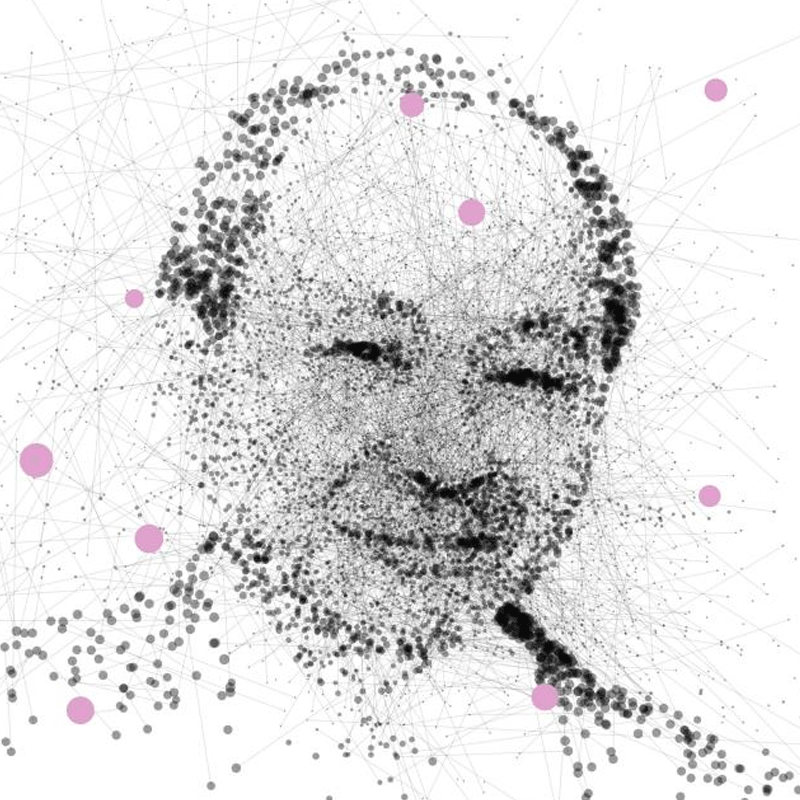
A group of researchers, including Stanford professor Francis Fukuyama, are advocating for a competitive market in middleware to lessen internet platforms’ power over democratic political debate.
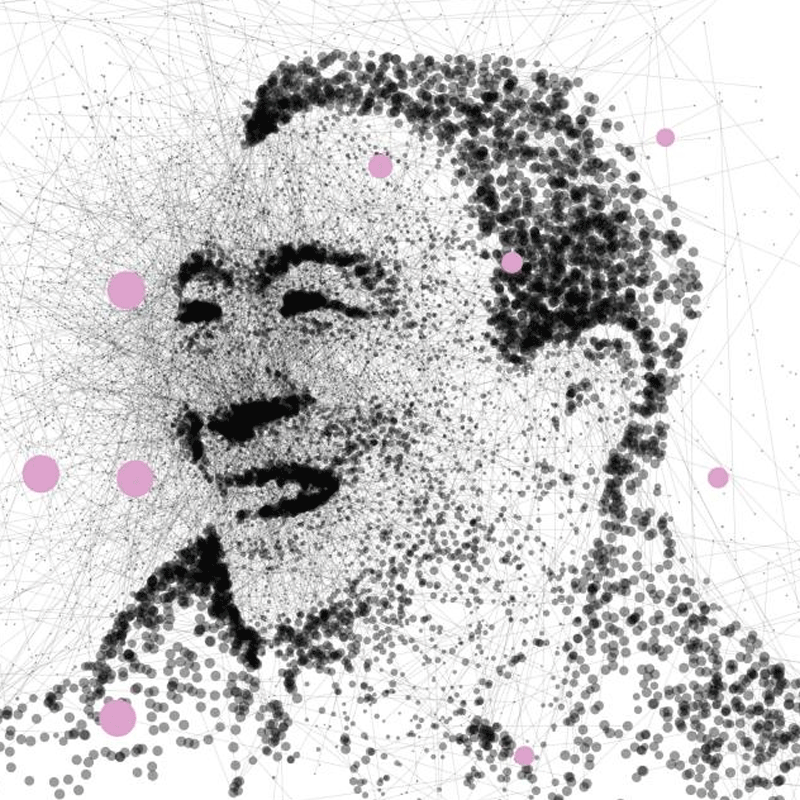
Former presidential candidate Andrew Yang proposes giving every American adult $1,000 a month to avert an economic crisis.

Economist Divya Siddarth and her colleagues propose creating data cooperatives that would function as intermediary fiduciaries who would negotiate with companies and other entities to establish guidelines around the use of our shared data.
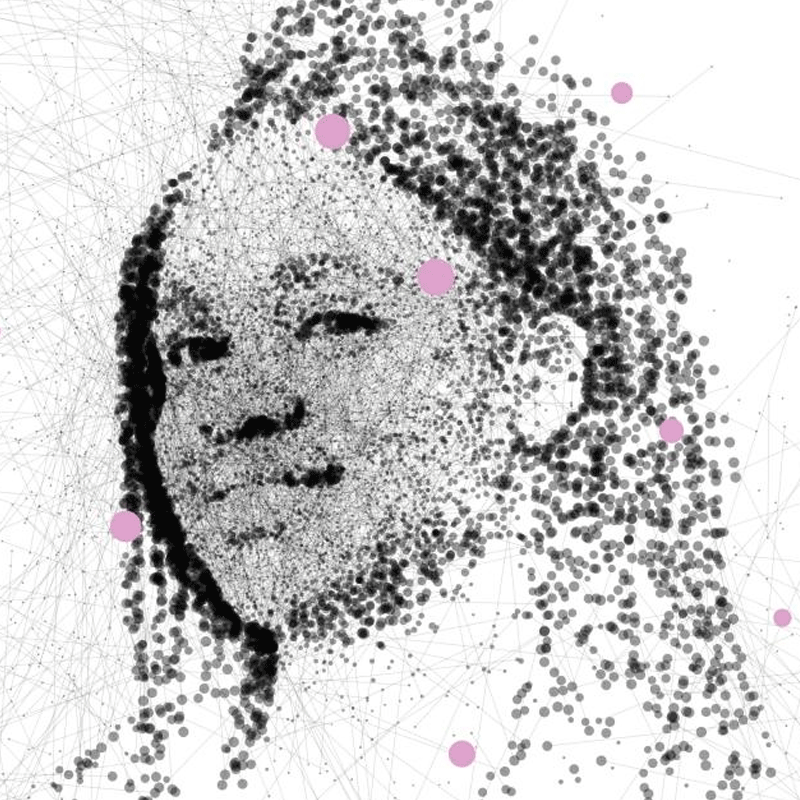
Deb Raji, a fellow at the Mozilla Foundation and PhD student at UC Berkeley, proposes legal protections and regulatory involvement to support organizations that uncover algorithmic harm.
September 16, 2021
1 min read
Capgemini, a global firm that focuses on consulting, digital transformation, technology, and engineering services, has signed on to become the first member of the Stanford Digital Economy Lab Corporate Affiliate Program.
The newly launched corporate program will create opportunities for industry professionals to network with leading academics and discuss key topics related to the digital economy. The events and activities are designed to promote knowledge-sharing, brainstorming, and to discuss datasets that could further S-DEL’s research portfolio.
“We are delighted to have Capgemini as the inaugural corporate affiliate member, and we are looking forward to working with their experts and clients to find innovative and actionable solutions,” said Erik Brynjolfsson, director of the Stanford Digital Economy Lab. “Industry engagement is essential to understanding the opportunities and obstacles ahead. With collaborators like Capgemini, we will be better able to help policymakers, businesses, and professionals rise to the challenges created by digitization and address the digital divide.”
As a corporate affiliate, Capgemini will draw from its Applied Innovation Exchange and global client database to collaborate with S-DEL researchers on a diverse set of topics. Their first collaboration may focus broadly on Digital Platforms, one of the Lab’s five research focus areas, with a specific project to be scoped together over the coming months.
“Collaboration between industry and academia is key to addressing the many questions that the digital economy has raised, and will continue to raise, in the years to come,” said Andreas Sjöström, Leader of Capgemini’s Applied Innovation Exchange in San Francisco. “We’re greatly looking forward to our work with the researchers at the Stanford Digital Economy Lab, and combining our resources, knowledge, and insights with their own to drive true innovation and create meaningful, positive change for all.”
Is your company interested in becoming an S-DEL Corporate Affiliate? Contact Christie Ko at christieko@stanford.edu.
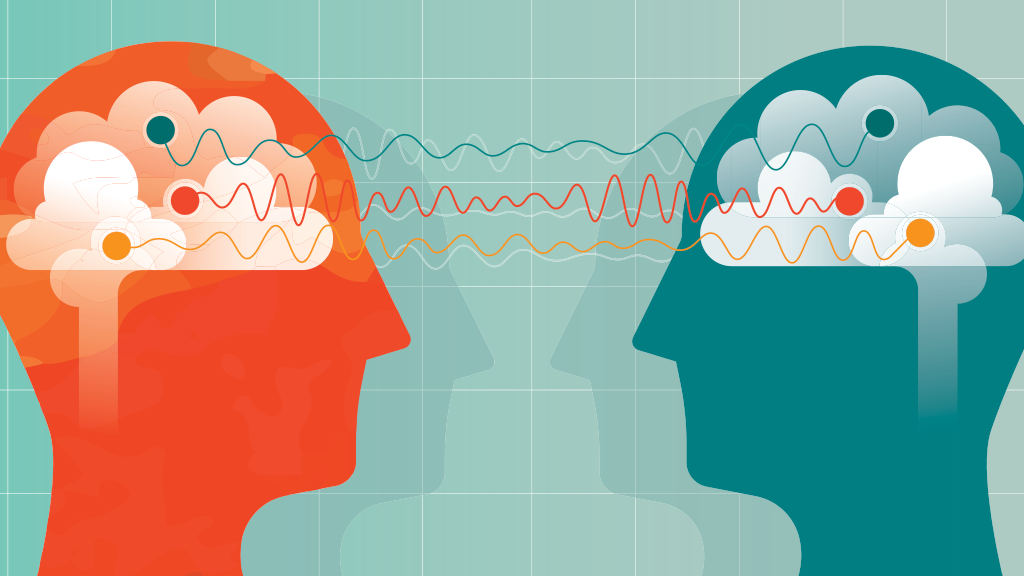
Stanford Digital Economy Lab Corporate Affiliates receive invitations to our events and have the opportunity to talk with Lab faculty, staff, students, and fellows. Corporate Affiliates may also have the option to engage in Lab research projects.
The past 15 years have been economically tough for many Americans, but there are encouraging signs of a turnaround.
In their recent article, The Coming Productivity Boom, Stanford Digital Economy Lab (S-DEL) Director Erik Brynjolfsson and S-DEL Digital Fellow Georgios Petropoulos point out that while US labor productivity growth averaged only 1.3 percent since 2006—less than half the rate of the previous decade—productivity growth increased by 5.4 percent in the first quarter of 2021. “There’s reason to believe that this is not just a blip,” the researchers write, “but rather a harbinger of better times ahead: a productivity surge that will match or surpass the boom times of the 1990s.”
After growing at an average annual rate of around 2.8 percent between 1947 and 1973, US productivity has significantly slowed down, except for the internet-driven productivity boost between 1996 and 2004. Despite the relentless advances of digital technologies over the past 15 years—from smartphones and broadband wireless to cloud computing and machine learning—productivity has only grown at an anemic 1.3 percent, between 2006 and 2019. Most OECD countries have seen similar slowdowns.
What accounts for this puzzling so-called productivity paradox and when might it finally end? During the past several years, Brynjolfsson and his collaborators have explored this question, first at MIT where he was faculty director of the MIT Initiative on the Digital Economy, and since 2020 at Stanford, where he’s director of S-DEL. Brynjolfsson discussed alternative explanations for the paradox at a recent MIT conference.
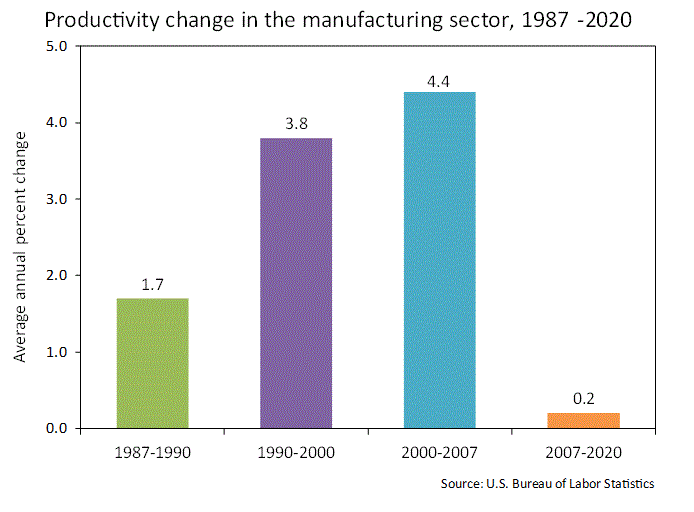
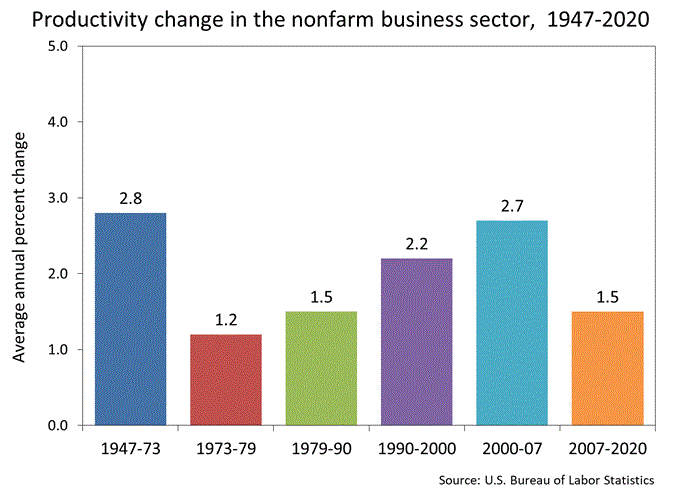
Measuring productivity is difficult in an increasingly digital economy
Most measures of economic performance used by government officials to inform their policies and decisions are based on gross domestic product, or GDP. But this measurement is a relic of a time dominated by manufacturing when the production of physical goods was much easier to measure. GDP is a much less reliable measure of economic output and productivity in our digital economy, where services play a much bigger role and are subject to considerably more variation in quality and value.
How do you measure the value of the explosive amounts of free goods available over the internet, including Wikipedia articles, Facebook social interactions, Linux open-source software, and YouTube videos? Since all these services are free, they’re excluded from GDP measures. Furthermore, many new services we used to pay for are now also free or nearly so, including long-distance calls, news, maps, and music.
A 2019 research paper co-authored by Brynjolfsson introduced a novel method for measuring the value of free digital goods to consumers using online experiments. The experiments provided an estimate of the consumer surplus of a digital good, loosely defined as the difference between the amount consumers would be willing to pay and the actual price they did pay for the digital good. The data showed that the digital economy is contributing considerably more consumer value than we’ve realized, especially when you consider that 15 years ago many of these digital services didn’t exist or were in their infancy. Now, they’re tightly integrated into our work and personal lives, much more so since many of our interactions have been driven online by the pandemic.
Innovation and productivity are declining
Some economists contend—most prominently Northwestern University’s Robert Gordon—that our current digital technologies, advanced and exciting as they might be, aren’t as transformative as the industrial-age technologies from the period between 1870 and 1970 when we experienced high productivity growth and a rising standard of living. Gordon argues that the slow growth of the past few decades isn’t cyclical, but rather evidence that long-term economic growth may be grinding to a halt. There was little growth before 1800, and there might conceivably be little growth in the future.
However, even a technology skeptic like Gordon admits that the pandemic will likely have a positive impact on productivity—albeit a small one—as a result of the accelerated digitization and reorganization of work.
In July, Brynjolfsson and Gordon made a modest Long Bets wager regarding productivity growth for this decade. Brynjolfsson predicts that “private nonfarm business productivity growth will average over 1.8 percent per year from the first quarter (Q1) of 2020 to the last quarter of 2029 (Q4).” Gordon challenges that prediction, arguing that 1.8 percent productivity growth isn’t consistent with the historical record. The loser of the bet will make a $400 donation to GiveWell charities.
Tech advances rapidly, humans not so much
A third explanation for the productivity paradox—and the one I find most compelling—is described in The Productivity J-Curve, a working paper co-authored by Brynjolfsson in January 2020. According to the paper, there’s generally been a significant time lag for a major new transformative technology to be widely embraced across economies and societies. While technologies may advance rapidly, humans and our institutions change slowly.
The paper identifies two phases, investment and harvesting, in the life cycle of a historically transformative technology. Since these technologies are general purpose in nature, they require massive complementary investments for their full benefits to be realized, including new products, processes and business models, and the re-skilling of the workforce. The more transformative the technology, the longer it takes to reach the harvesting phase—and only then will it be widely embraced by companies and industries. Translating technological advances into productivity gains requires major transformations in the strategy, organization, and culture of institutions—and these take considerable time.
For example, US labor productivity grew at only 1.5 percent between 1973 and 1995. This period of slow productivity coincided with the rapid growth in the use of IT in business, giving rise to the Solow productivity paradox, a reference to Nobel Prize MIT economist Robert Solow’s 1987 quip: “You can see the computer age everywhere but in the productivity statistics.” But starting in the mid-1990s, US labor productivity surged to over 2.5 percent, as fast-growing internet technologies and business process re-engineering helped to spread productivity-enhancing innovations across the economy.
Similarly, productivity growth didn’t increase until 40 years after the introduction of electric power in the early 1880s. It took until the 1920s for companies to figure out how to restructure their factories to take advantage of electric power with manufacturing innovations like the assembly line and new electric products like consumer appliances. And while James Watt’s steam engine ushered the Industrial Revolution in the 1780s, its impact on the British economy was imperceptible until the 1830s because their use was restricted to the few industries who could afford their high early costs.
S-DEL researchers are exploring new means and methods to measure a rapidly changing digital economy.



The rise of the productivity J-curve
Brynjolfsson argues that the 2020s will be a decade of innovation and productivity, a kind of 21st century Roaring Twenties. What accounts for his optimistic prediction? Brynjolfsson cites three reasons why “this time around the productivity J-curve will be bigger and faster than in the past.”
Reason #1: The advancement of AI and other digital technologies. Beyond AI, several scientific and technological advances are ready to transition from the investment phase of the J-Curve to the harvesting, productivity-growth phase. These include digital innovations that have been considerably accelerated by the pandemic, such as telemedicine, e-commerce, and remote work, as well as breakthrough advancements in renewable energy and biomedical sciences. “In drug discovery and development, new technologies have allowed researchers to optimize the design of new drugs and predict the 3D structures of proteins,” writes Brynjolfsson. “At the same time, breakthrough vaccine technology using messenger RNA has introduced a revolutionary approach that could lead to effective treatments for many other diseases.”
Reason #2: Exponential growth caused by the pandemic. “The recent COVID-19 relief package is likely to reduce the unemployment rate from 5.8 percent (in May 2021) to the historically low pre-covid levels in the neighborhood of 4 percent,” writes Brynjolfsson. “Low unemployment levels drive higher wages, which means firms have more incentive to harvest the potential benefits of technology to further improve productivity.”
Reason #3: Incentives created by ambitious policies. Aggressive US fiscal and monetary policies are creating greater incentives for companies to implement productivity improvements.
“When you put these three factors together—the bounty of technological advances, the compressed restructuring timetable due to COVID-19, and an economy finally running at full capacity—the ingredients are in place for a productivity boom. This will not only boost living standards directly but also frees up resources for a more ambitious policy agenda.”
In addition to being a digital fellow at the Stanford Digital Economy Lab, Irving Wladawsky-Berger is a research affiliate at MIT’s Sloan School of Management and fellow at both the MIT Initiative on the Digital Economy and MIT Connection Science initiative.
Keep reading
August 2, 2021
1 min read
Three Stanford Digital Economy Lab digital fellows have received a 2021 Antitrust Writing Award for their working paper titled “Digital Platforms and Antitrust.”
The digital fellows, Geoffrey Parker, Georgios Petropoulos, and Marshall Van Alstyne, were recognized as authors of the best academic paper written in the Digital category.
Organized by Concurrences and The George Washington University Law School’s Competition Law Center, the Antitrust Writing Awards celebrate the best in antitrust writing across a spectrum of categories, including mergers, intellectual property, and procedure.

Georgios is a post-doctoral researcher at MIT Initiative on the Digital Economy and a research fellow at Bruegel, an economics think tank based in Brussels. His research focuses on digital platforms, competition policy, and the implications of new technologies on labor markets.

Marshall is one of the leading experts in network business models. As co-developer of the concept of “two-sided networks,” he has been a major contributor to the theory of network effects, a set of ideas now taught worldwide.

Geoff has made significant contributions to the field of network economics and strategy as co-developer of the theory of “two-sided” markets. He is also co-author (with Marshall Van Alstyne) of the book, Platform Revolution.

Parker, Petropoulos, and Van Alstyne discuss the EU Digital Markets Act, legislation that seeks to reign in the power of big tech companies like Amazon, Apple, and Google.
July 12, 2021
MIT Sloan
After years of decline, productivity is poised to accelerate, says Stanford Digital Economy Lab Director Erik Brynjolfsson. The next challenge is preparing workers, and making sure benefits aren’t distributed unequally.
Read article
July 19, 2021
4 min read
Automation is on the rise. The nature of work is rapidly changing. And businesses and California policymakers are dealing with a growing set of challenges and opportunities presented by the state’s evolving workforce and job market.
The Stanford Digital Economy Lab (S-DEL) and the Stanford Institute for Economic Policy Research (SIEPR) are embarking on research that will help evaluate how artificial intelligence and machine learning will impact the future of work in California for the next century. The project begins this summer and will be led by S-DEL Director Erik Brynjolfsson and SIEPR Director Mark Duggan.
The work will be performed in collaboration with California 100, an initiative to envision and shape the long-term success of the state. Incubated at the University of California and Stanford University, the California 100 initiative will focus on creating policy recommendations to ensure the state’s sustainability, innovation, and equity for the next century.
“The vision of the California 100 initiative aligns perfectly with the Lab’s vision of building a technology-driven economy that benefits everyone,” said Brynjolfsson. “We look forward to being a part of a project that helps companies and workers in California take on the challenges and opportunities posed by digitization and automation.”
Stanford researchers will develop a Future of Work Dashboard that draws on S-DEL’s data and insights to illustrate the transformation of jobs throughout California. The dashboard will sample a range of occupations across different regions, wage levels, education levels, and skill bundles to assess the resilience of each job to automation. The data will also highlight the most valuable skills in each occupation, suggest adjacent lines of work, and provide a comprehensive outlook for each position.
The Future of Work Dashboard will utilize data from ongoing Stanford Digital Economy Lab research, including the following research areas and projects.
Researchers will address issues tied to tax policy and minimum wage and their impact on innovation and automation. “Rigorous, data-driven research is the foundation for creating good economic policy,” Duggan said. “Our work at SIEPR has long informed policy decisions at the local, state, and federal levels, and this is an opportunity for us to make important contributions to California’s economic future.”
Stanford’s research and insights will inform a broad set of policy recommendations that will be developed in conjunction with research from other universities and research institutions. The research will be completed in December 2021.
Follow us on Twitter for updates about the California 100 initiative, as well as other S-DEL research projects.
A March 2021 report released by the Future of Work Commission detailed what must be done to ensure inclusive and long-term economic growth in California. The Commission, which included Stanford HAI co-director Fei-Fei Li and HAI advisors Mary Kay Henry and James Manyika, devoted 18 months to meeting and listening to workers, employers, researchers, and other members of civil society to understand the current state and future of work and workers in California.